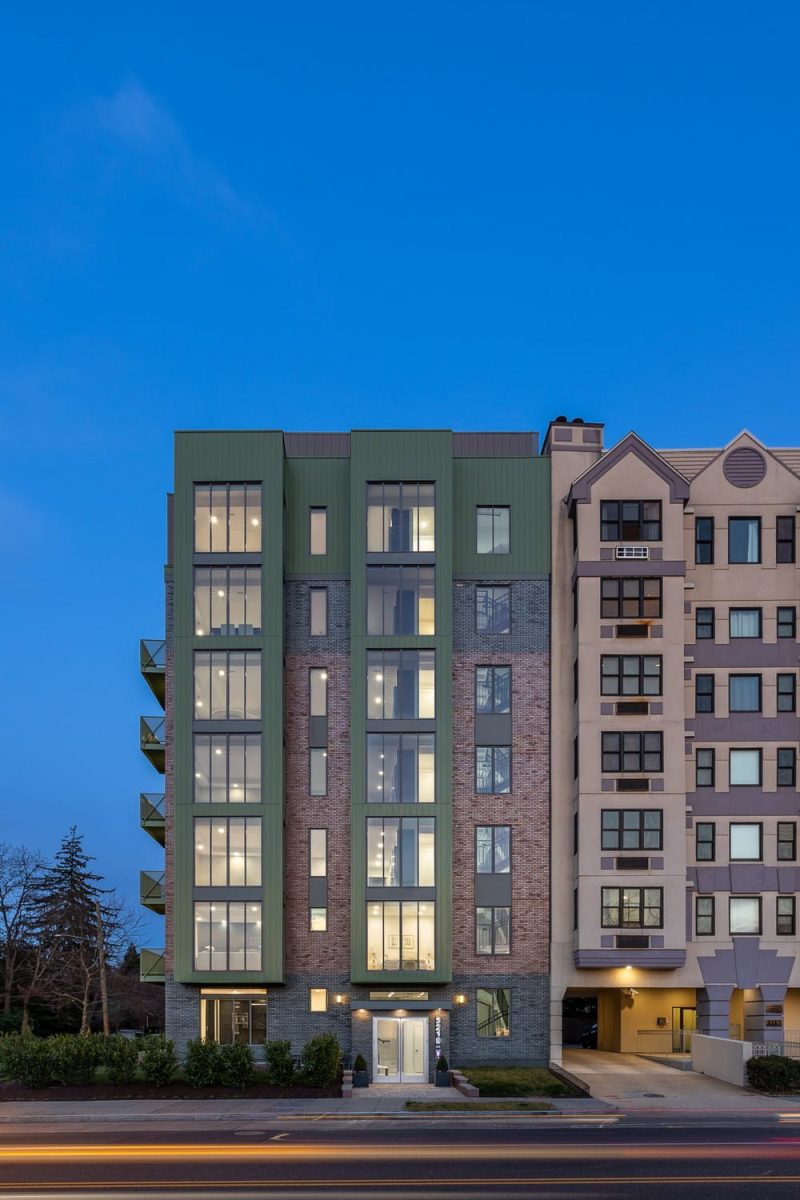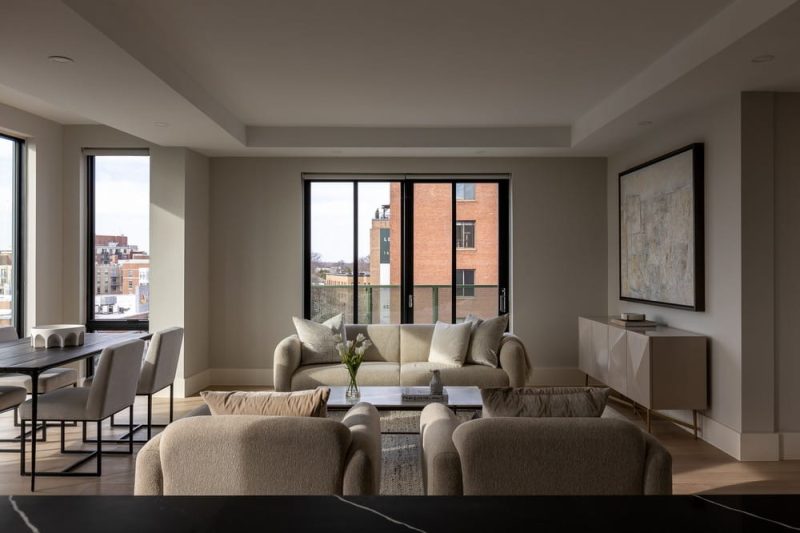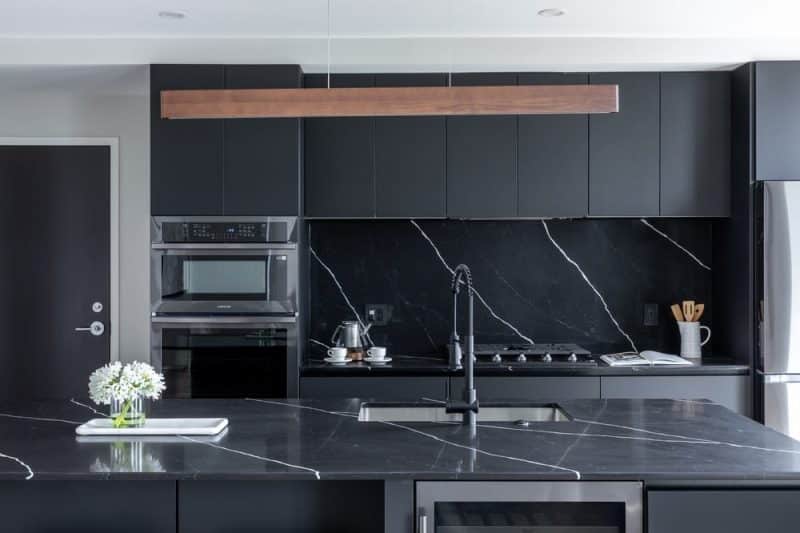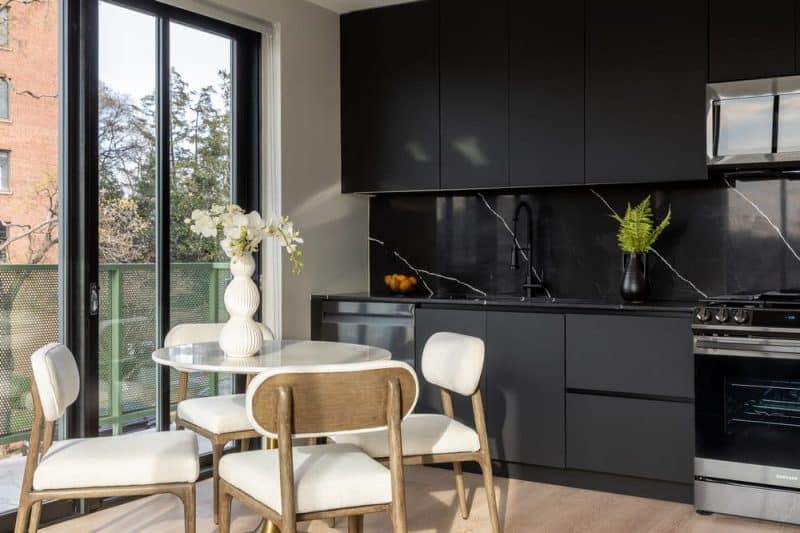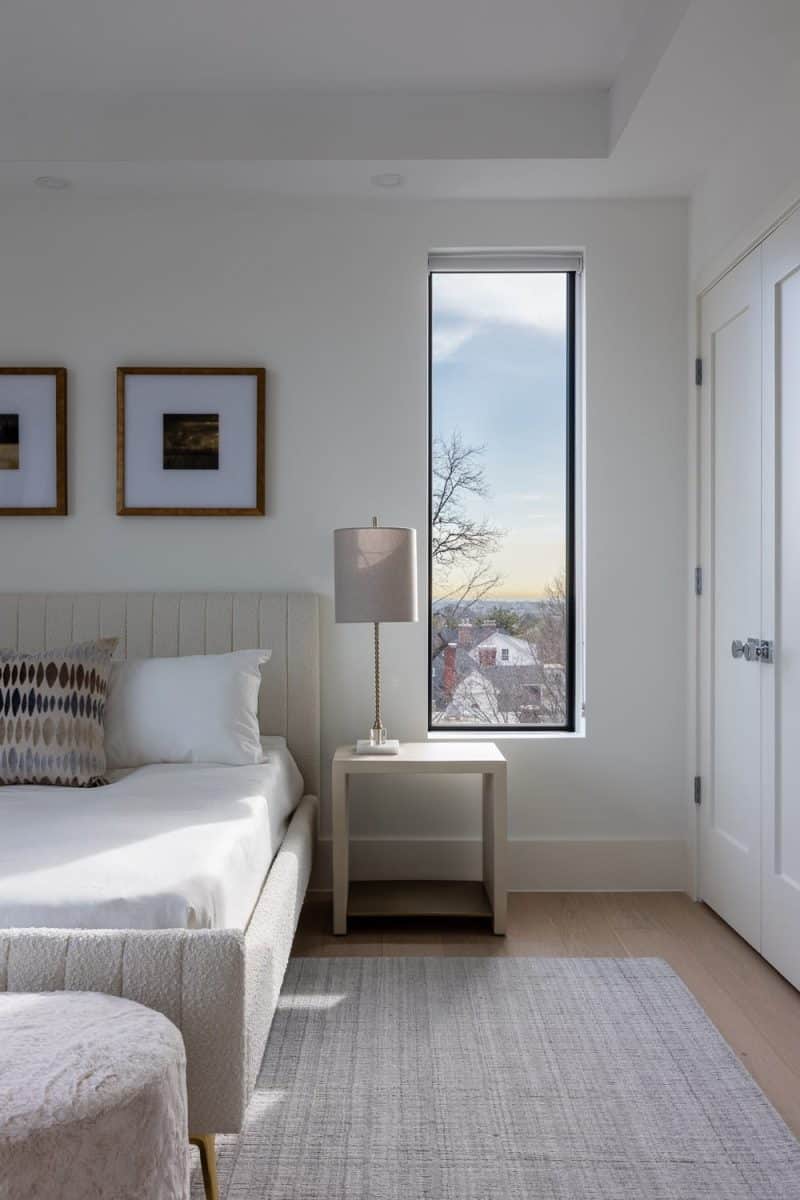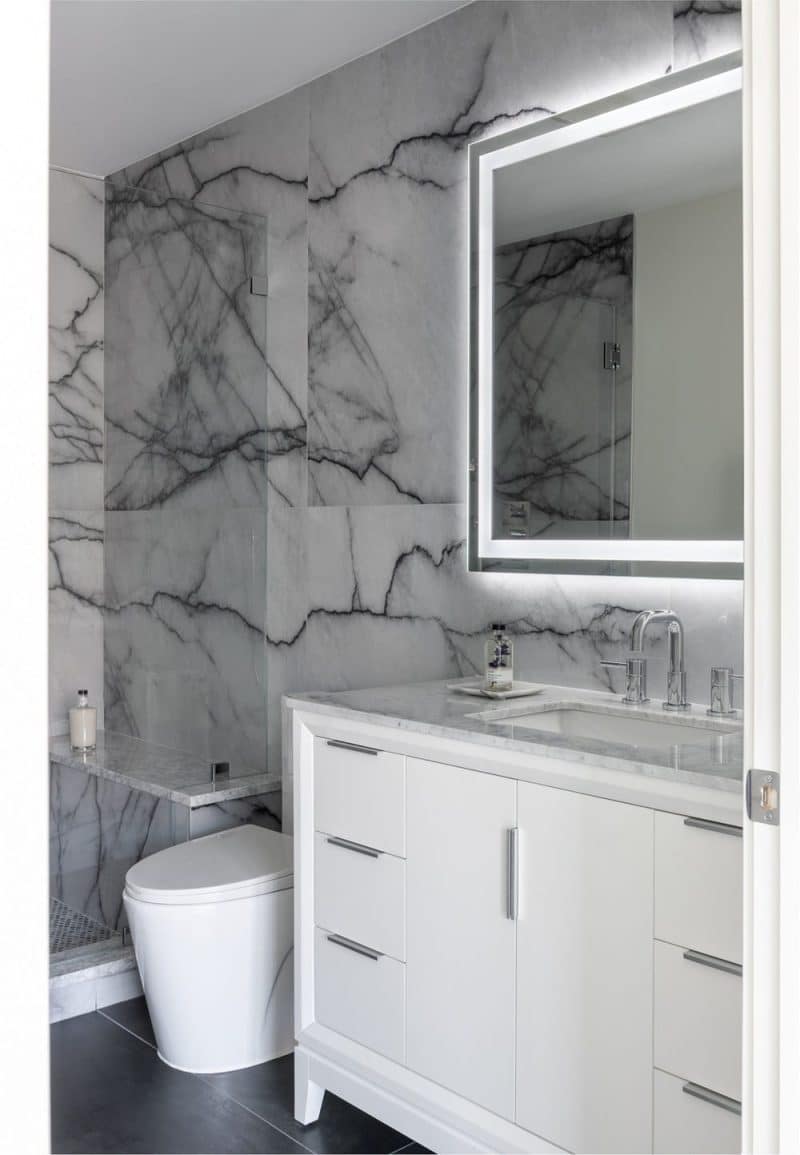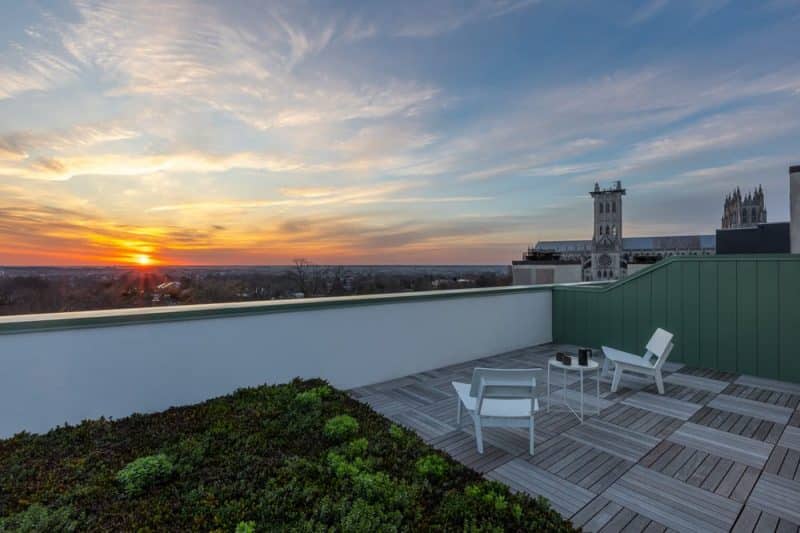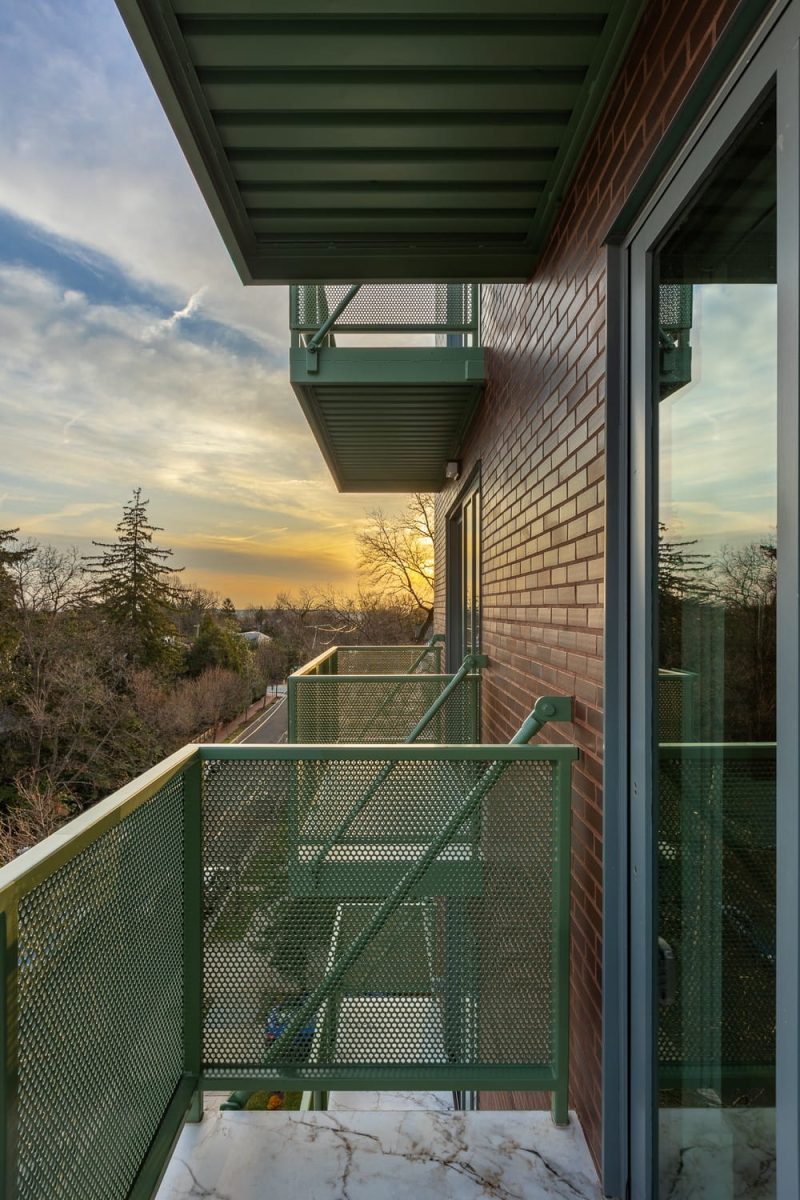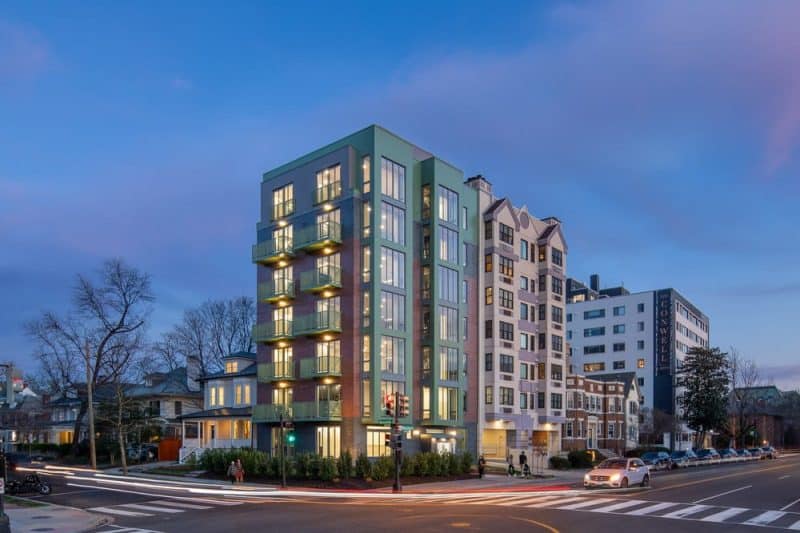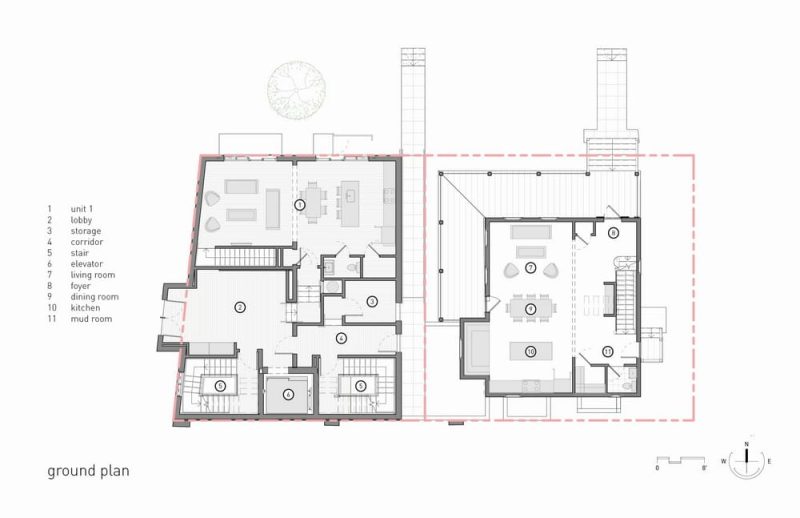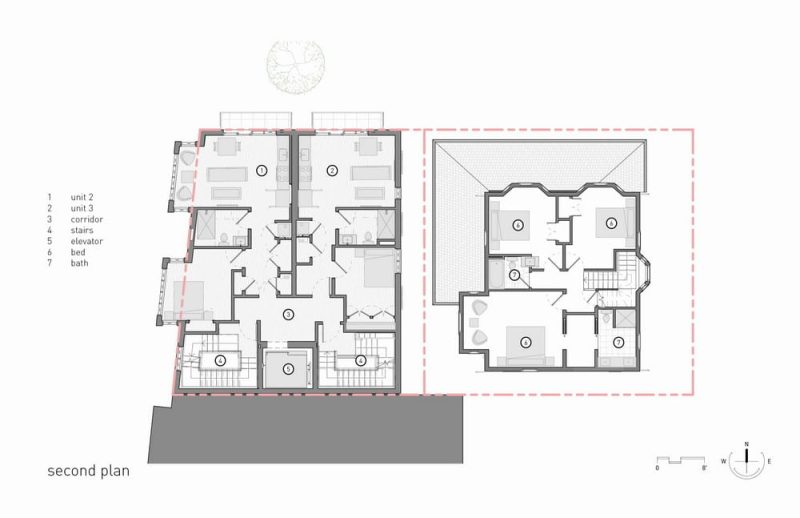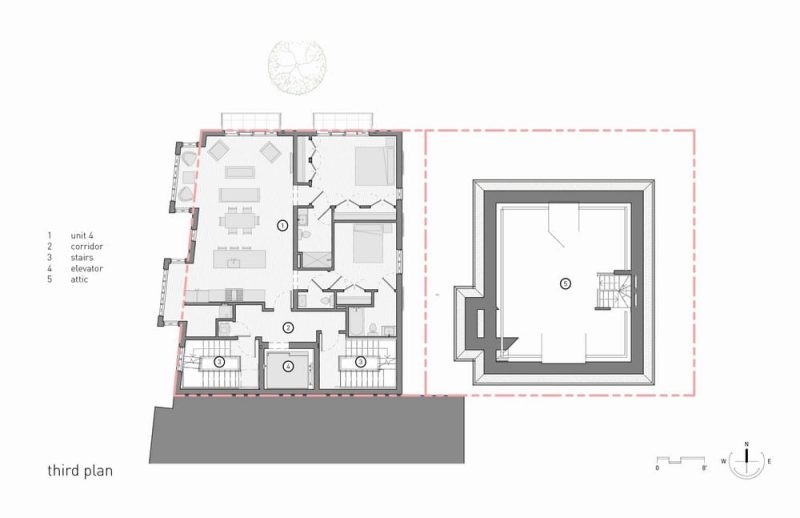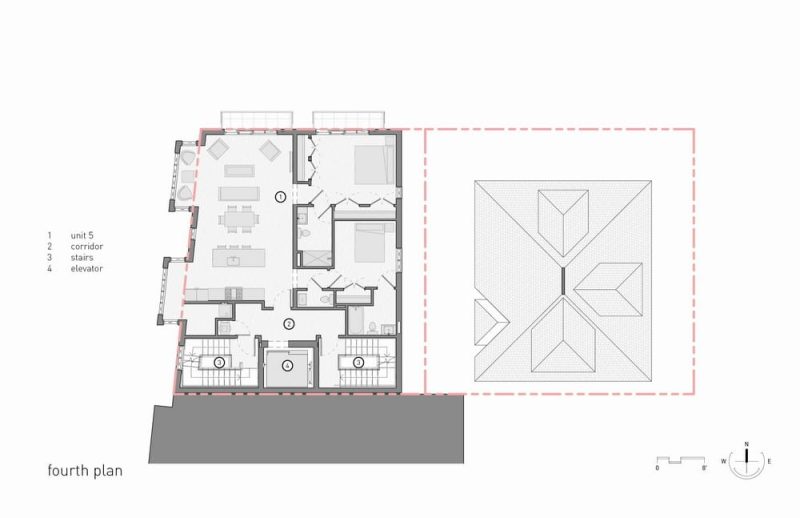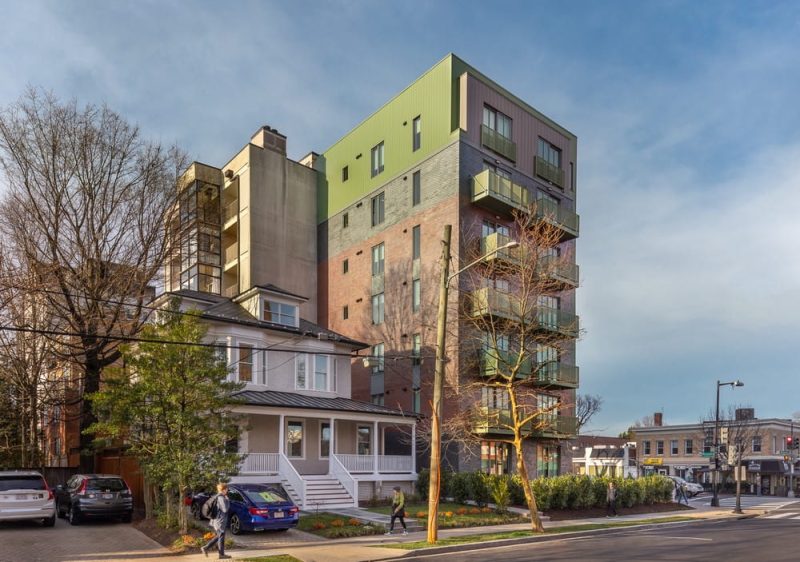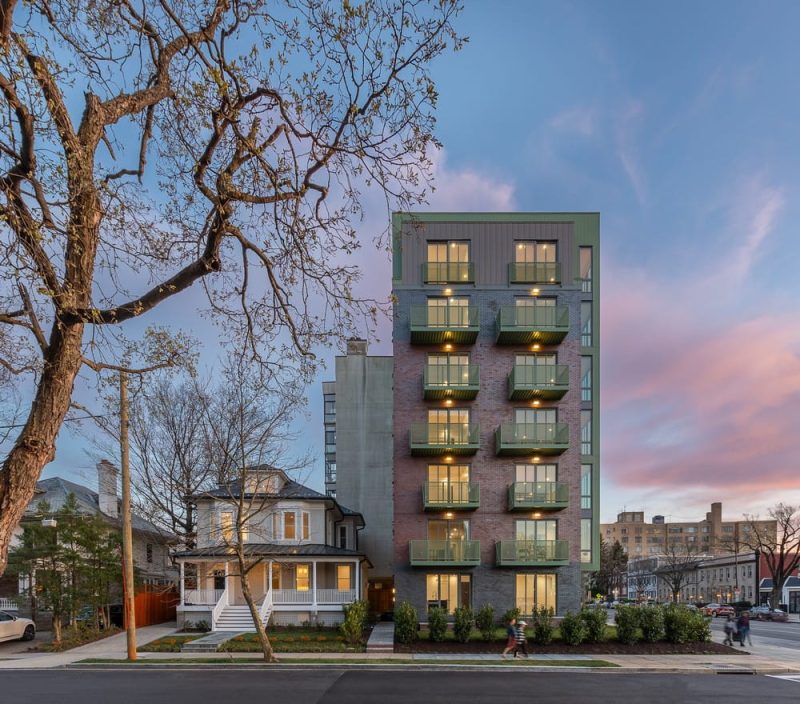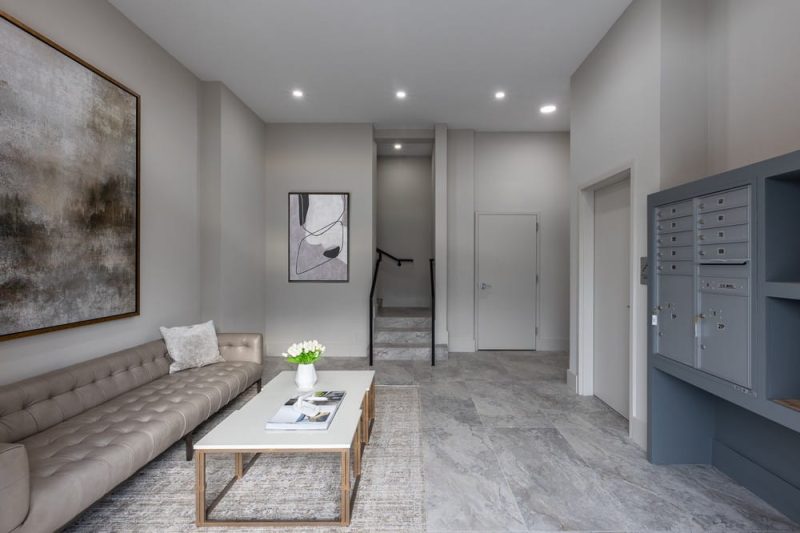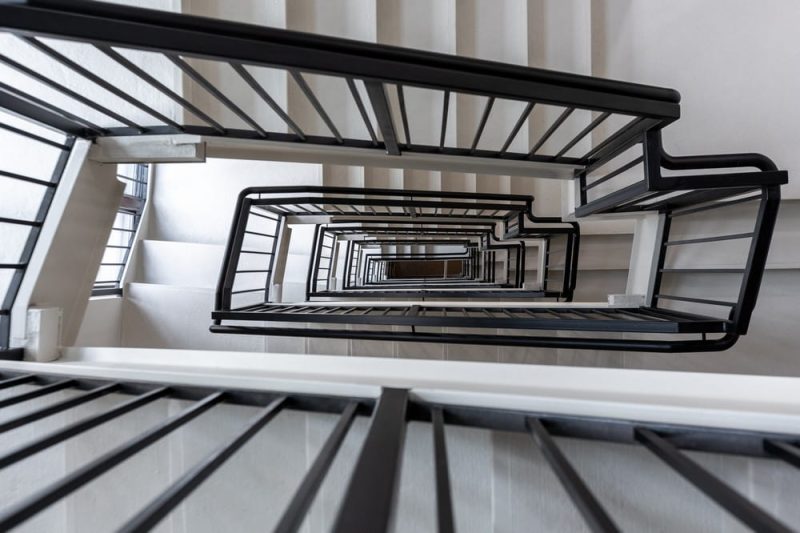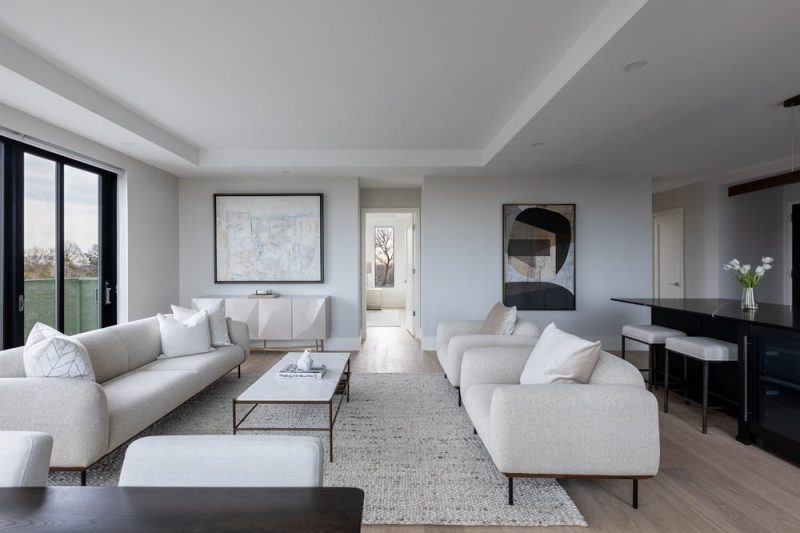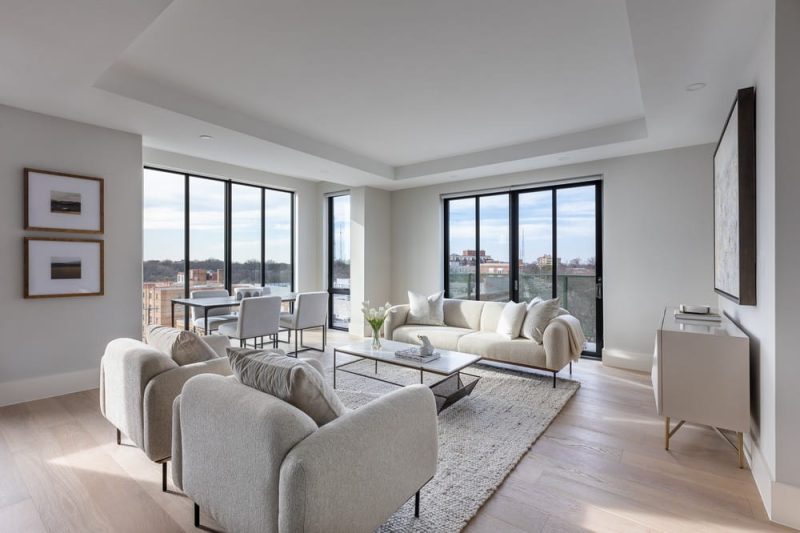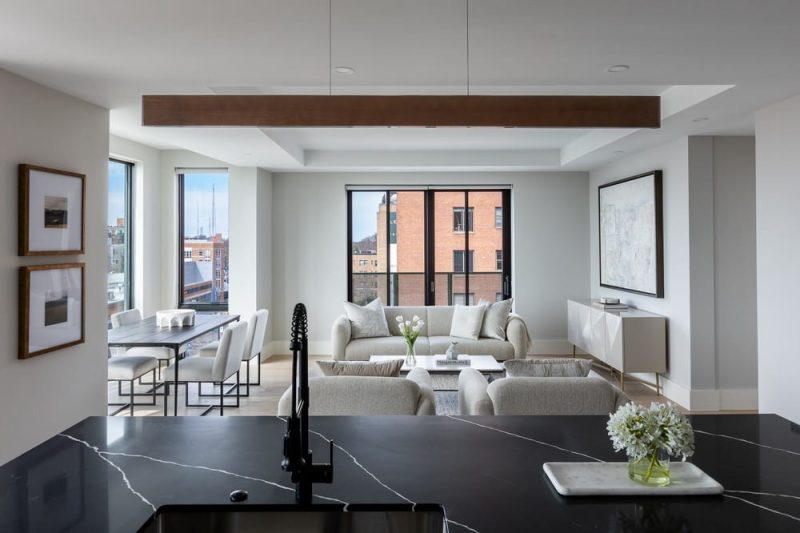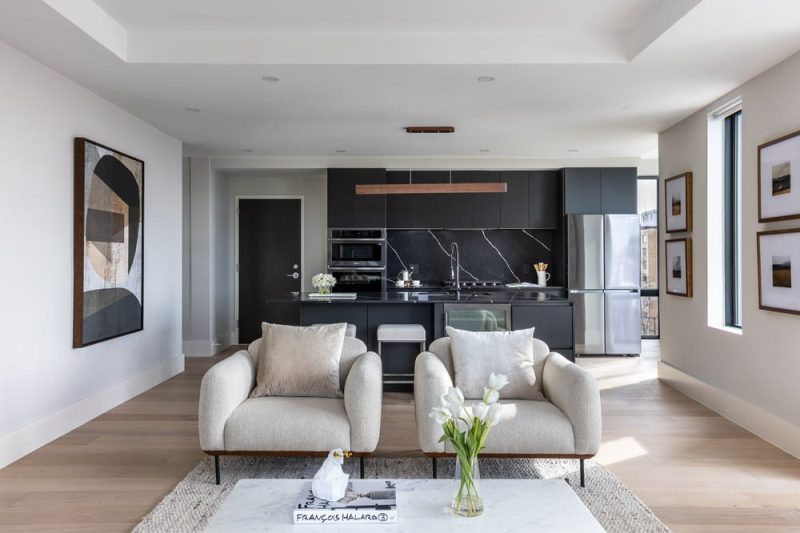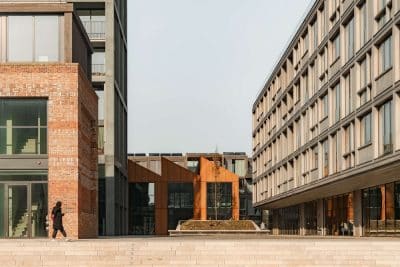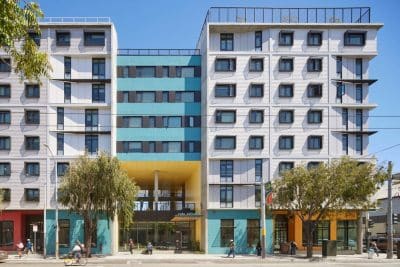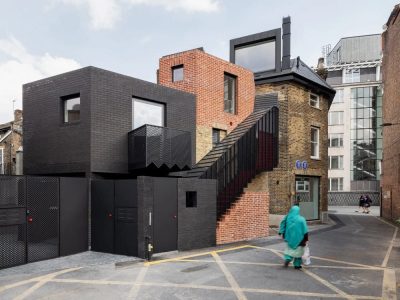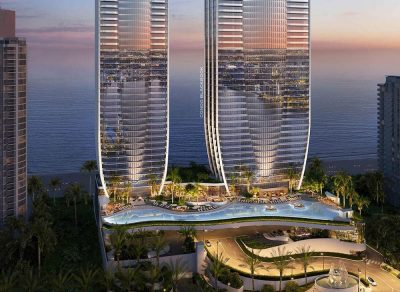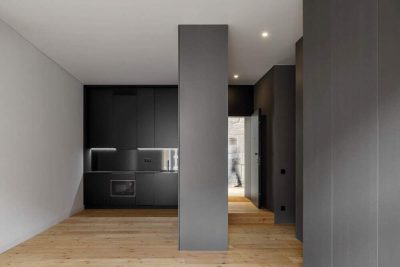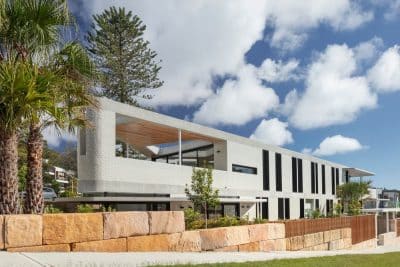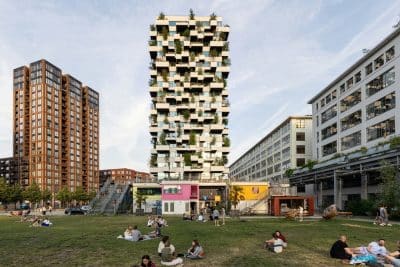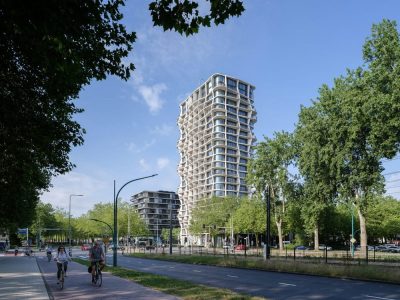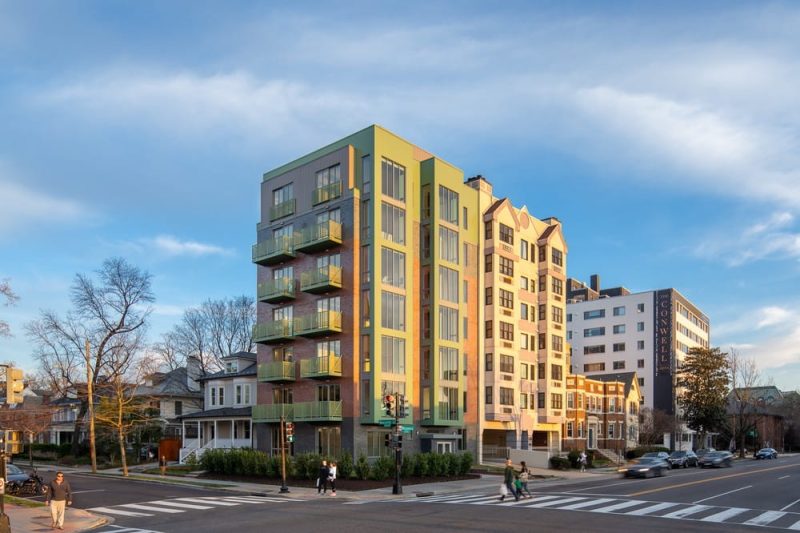
Project: Le Parc Apartment Building
Architecture: Teass Warren Architects
Location: Washington DC, United States
Year: 2023
Photo Credits: Kate Wichlinski
Le Parc Apartment Building by Teass Warren Architects reimagines the potential of a historic lot along Wisconsin Avenue, just a block from the National Cathedral. By relocating and rotating an existing house on the site, the architects not only restored its relationship to the Cleveland Park Historic District but also created room for a new multi-residential development. As a result, the project combines heritage sensitivity with urban density in a highly desirable location.
Restoring Historic Context
The existing historic house had become isolated over time, losing its connection to the surrounding architecture. Teass Warren Architects proposed a bold yet respectful solution: repositioning the house on the same lot to realign it with neighboring historic buildings along Macomb Street. This strategic move reestablished the home’s architectural dialogue with its context while opening opportunities for new construction.
Adding Density Through Creative Design
With zoning that allowed for higher density and height, the site offered untapped potential. By “borrowing” the air rights of the repositioned house, the new Le Parc Apartment Building was able to maximize the property’s development capacity. The result was eight modern residential apartments where previously only a single-family house had existed. This adaptive approach addressed the city’s housing demand while preserving the character of the neighborhood.
Navigating Approvals and Regulations
Because of its historic setting, the project required careful coordination with local authorities. Teass Warren Architects successfully secured approvals from both the Historic Preservation Review Board and the Board of Zoning Adjustment. These approvals highlight the project’s thoughtful balance between honoring heritage and meeting contemporary urban needs.
Le Parc Apartment Building as a Model for Urban Growth
Ultimately, Le Parc Apartment Building demonstrates how architects can reconcile preservation with progress. By integrating a historic structure into a denser urban framework, the project enhances both the streetscape and the neighborhood’s vitality. It stands as an example of creative, respectful, and forward-looking urban design in Washington, D.C.
